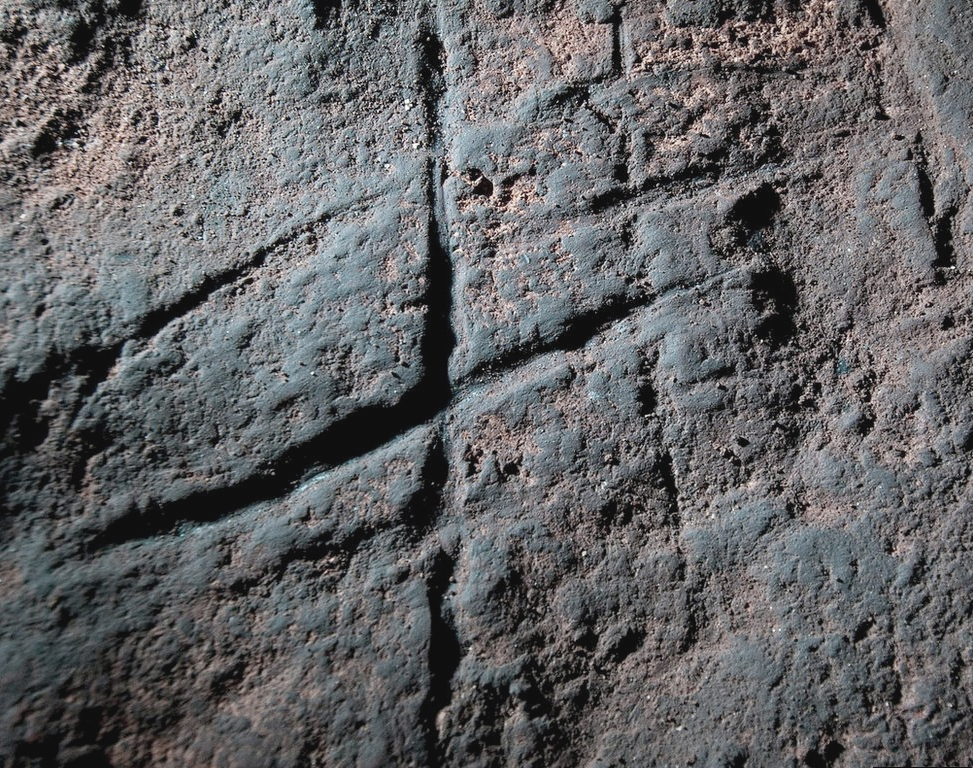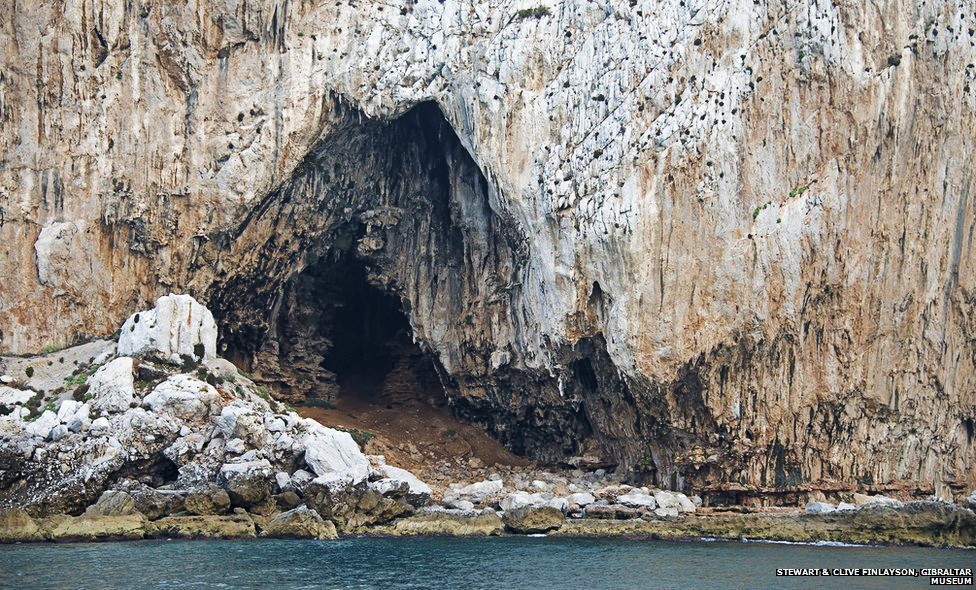


In an online article by Paul Rincon, Science editor of the BBC - Neanderthal artwork found in Gibraltar cave - we learn of an engraving found at a cave in Gibraltar, adding further to the evidence of Neanderthal art. A geometric pattern had been carved on to the rock face in a section of Gorham's Cave in Gibraltar. This well-researched archaeological site of Neanderthal occupation has clearly got a few more stories to tell.

Photo: Stewart Finlayson
The geometric pattern was uncovered beneath undisturbed sediments that have also yielded Neanderthal tools. Details of the discovery by an international team of researchers has been published in the journal PNAS. This is yet another example of the intellectual and symbolic attributes of the Neanderthal. Along with the art, we know that our 'distant cousins' ceremonially buried their dead, cared for their elders, adorned themselves, painted themselves, possibly made and used musical instruments, and lived with a varied diet.

Photo: Stewart & Clive Finlayson, Gibraltar Museum
Is the carving intentional? Are the markings utilitarian? The article describes how the archaeologists, in order to understand how the markings were made, carved experimental grooves using different tools and cutting actions on blocks of dolomite rock similar to the one at Gorham's cave. The method that best matched the engraving was one in which a pointed tool or cutting edge was carefully and repeatedly inserted into an existing groove and passed along in the same direction. The archaeologists estimated that the full engraving would have required 200-300 strokes with a stone cutting tool, taking at least an hour to create. This would perhaps rule out a utilitarian purpose for the design, such as cutting meat or fur on top of the rock, although it does not prove the design was meant to be symbolic; purposeful, but not necessarily symbolic.
The location of the marking in the cave occurs where the cave's orientation changes by 90 degrees. This may mean it was used as a locational device. Another explanation is that it was a mark of cave occupation. The engraving was first discovered 2012 by Francisco Giles Pacheco, director of the Archaeological Museum of El Puerto Santa Maria, Spain.
Dating the markings will be difficult. Material in the sediment covering the markings can be dated, but not the markings themselves.
To view more on the Neanderthal culture:
http://www.bradshawfoundation.com/origins/homo_neanderthalensis.php
by Bradshaw Foundation
Tuesday 21 March 2023
by Bradshaw Foundation
Tuesday 07 February 2023
by Bradshaw Foundation
Thursday 19 May 2022
by Bradshaw Foundation
Tuesday 19 October 2021
by Bradshaw Foundation
Friday 25 June 2021
by Bradshaw Foundation
Monday 09 November 2020
by Bradshaw Foundation
Tuesday 03 November 2020
by Bradshaw Foundation
Wednesday 28 October 2020
by Bradshaw Foundation
Tuesday 23 June 2020
by Bradshaw Foundation
Thursday 04 June 2020
by Bradshaw Foundation
Thursday 14 May 2020
by Bradshaw Foundation
Tuesday 12 May 2020
by Bradshaw Foundation
Wednesday 19 February 2020
by Bradshaw Foundation
Tuesday 21 January 2020
by Bradshaw Foundation
Monday 20 January 2020
by Bradshaw Foundation
Thursday 28 November 2019
by Bradshaw Foundation
Tuesday 21 March 2023
by Bradshaw Foundation
Tuesday 07 February 2023
by Bradshaw Foundation
Thursday 19 May 2022
by Bradshaw Foundation
Tuesday 19 October 2021
by Bradshaw Foundation
Friday 25 June 2021
by Bradshaw Foundation
Monday 09 November 2020
by Bradshaw Foundation
Tuesday 03 November 2020
by Bradshaw Foundation
Wednesday 28 October 2020
by Bradshaw Foundation
Tuesday 23 June 2020
by Bradshaw Foundation
Thursday 04 June 2020
by Bradshaw Foundation
Thursday 14 May 2020
by Bradshaw Foundation
Tuesday 12 May 2020
by Bradshaw Foundation
Wednesday 19 February 2020
by Bradshaw Foundation
Tuesday 21 January 2020
by Bradshaw Foundation
Monday 20 January 2020
by Bradshaw Foundation
Thursday 28 November 2019
Friend of the Foundation











